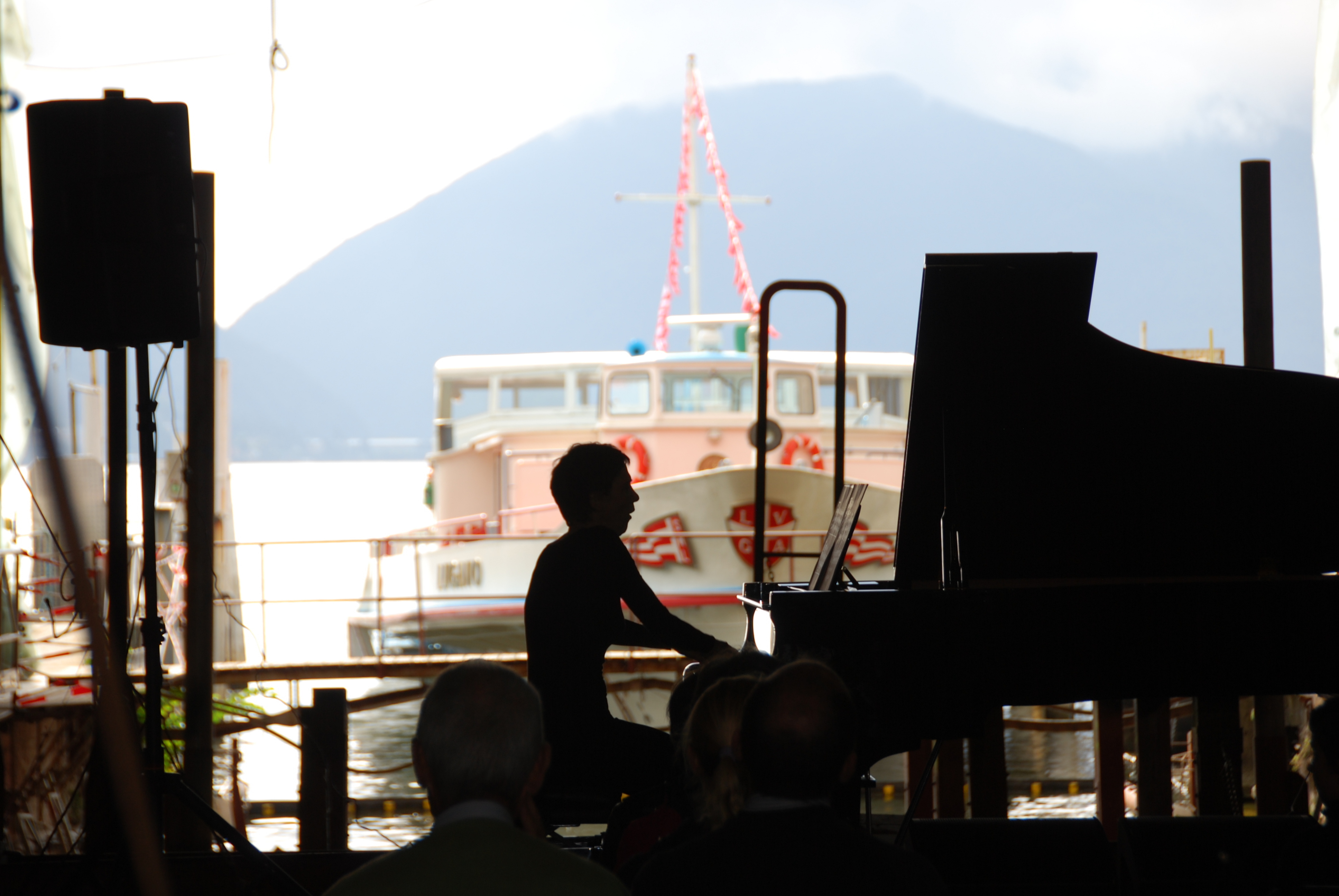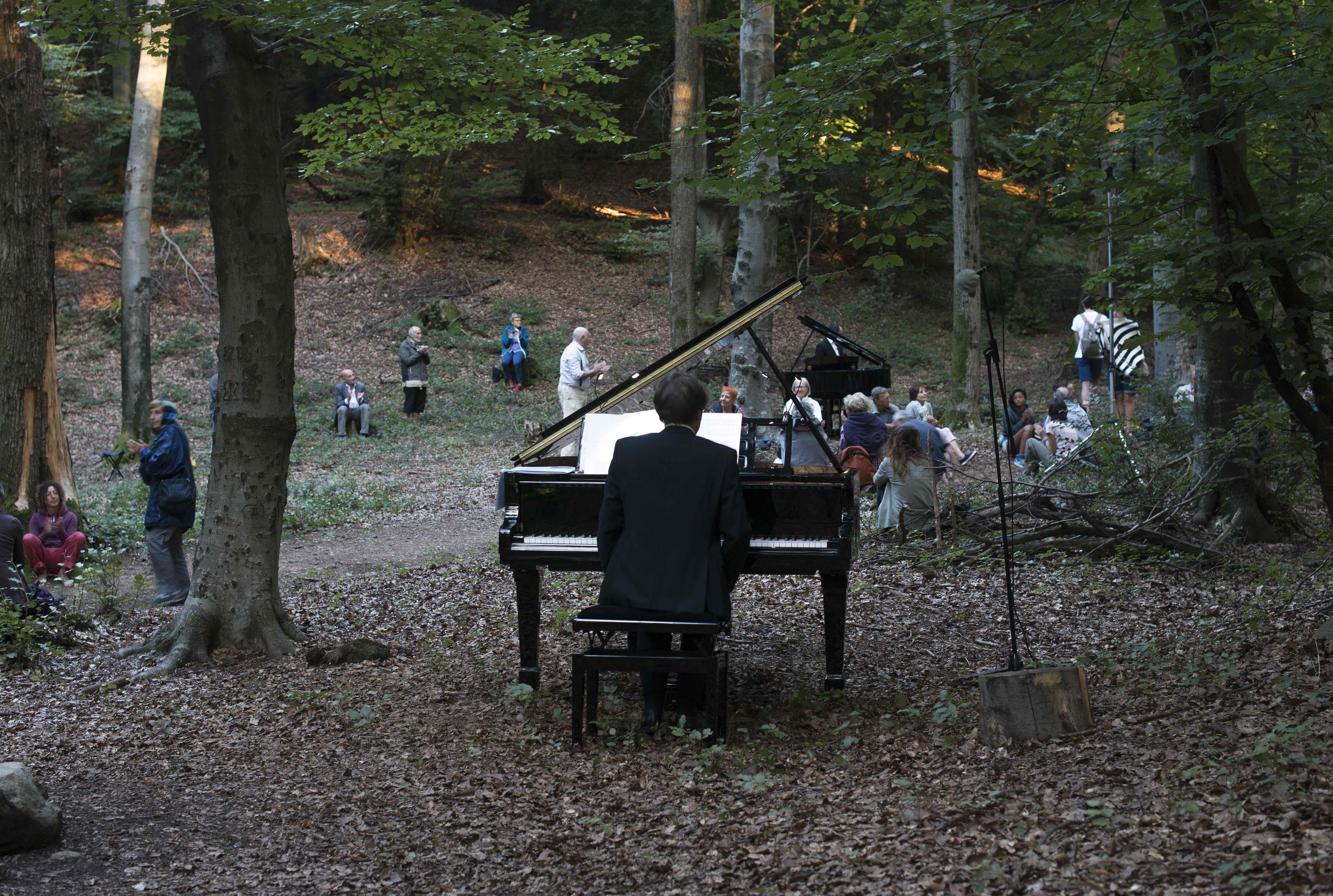Ci spiace, ma questo articolo è disponibile soltanto in tedesco e inglese americano.
La Via Lattea – passato e presente musicali nell’estremo sud della Svizzera

Zeno Gabaglio
«Dio può ringraziare Bach, perché Bach è la prova che Dio esiste». Quando il filosofo Emil Cioran coniò questo aforisma – tanto provocatorio quanto profondo, e per molti assolutamente veritiero – di sicuro non pensava al gioco di significati che la traduzione del cognome «Bach» avrebbe potuto comportate.
Ci ha invece pensato Mario Pagliarani che – delineando l’edizione 2019 de La Via Lattea – ha voluto porre in relazione proprio la più alta e metafisica composizione del genio di Lipsia (L’arte della fuga, BWV 1080) con la traduzione italiana di «Bach», scegliendo di percorrere il «ruscello» più meridionale di tutta la Svizzera.

L’idea è dunque quella di seguire il corso del fiume Breggia dalla sorgente (sulle pendici del Monte Generoso) alla foce (nel lago di Como) proponendo parallelamente l’esecuzione integrale del capolavoro estremo di Bach accanto a brani di autori contemporanei. Un dialogo inedito fra paesaggio e musica, dove i Contrappunti e i Canoni de L’arte della fuga vengono eseguiti sia su strumenti d’epoca, sia con arrangiamenti contemporanei dalle sonorità singolari – dal quartetto di sassofoni al quartetto di fisarmoniche.
“pellegrinaggio musicale – pellegrinaggio ecologico”
Quella che per uno spettatore ordinario può apparire un’autentica sfida – cioè percorrere a piedi un’intera valle, per di più ascoltando musiche assai particolari – da sedici anni è ormai una desiderata abitudine per chi segue la creazione di Pagliarani, quella Via Lattea fin dall’inizio definita “pellegrinaggio musicale” e poi anche “pellegrinaggio ecologico”, nel senso di una creatività che consiste nel collegare elementi che normalmente vengono considerati separati.
La Via Lattea 14, E la nave va
Mario Pagliarani è conosciuto soprattutto per essere un compositore, ma nel corso degli anni la sua “ordinaria creatività musicale” (quella che si realizza su pentagramma, per intenderci) ha trovato proprio ne La Via Lattea un pendant che sfugge alle normali categorie con cui siamo abituati a riconoscere le opere, cioè gli unici degni frutti del lavoro artistico.

«La Via Lattea è la rappresentazione del mio modo di pensare: più passa il tempo e più mi rendo conto che l’intuizione iniziale – quella di un percorso con stazioni – corrisponde a un mio modo di organizzare le idee. Qualcosa che deve essere iscritto nel mio dna» ha osservato Pagliarani. Ma come funziona dunque l’atto di creazione non già di un brano bensì di una sequenza sonoro-ambientale? «È un gioco di scatole cinesi. La Via Lattea è una composizione, o meglio, una macro-composizione all’interno della quale, di solito, inserisco anche un mio pezzo nuovo. Creo l’habitat ideale in cui collocare anche la mia musica».
La Via Lattea 14, Trailer
E infatti nei cinque movimenti – che si terranno il 21, 22, 27, 28 e 29 settembre 2019 – oltre all’integrale de L’arte della fuga ci sarà anche una nuova creazione di Pagliarani per clavicordo così come diverse altre opere di autori contemporanei, tra cui – in prima esecuzione assoluta – le Variationen über eine stillgelegte Fuge di Mischa Käser e la Fantasia – zum Thema von Bachs Canon per augmentationem in Contrario Motu aus der Kunst der Fuge di Roland Moser (interpretato del Xasax Saxofonquartett).
Roland Moser, Ensemble Phoenix Basel, Eleven sizes – extendes moments II for eight instruments, 2014/14
Ma non di sola musica si tratterà – come abitudine per La Via Lattea – perché accanto ai pellegrini viaggeranno pure il poeta Alberto Nessi (Gran Premio svizzero di letteratura 2016 nonché abitante della Valle di Muggio) e Raimund Rodewald (docente di estetica del paesaggio del Politecnico di Zurigo).
Zeno Gabaglio
Festival La Via Lattea, 16: 21.-29. settembre 2019
neo-profiles: Mario Pagliarani, Roland Moser, La Via Lattea, Marcus Weiss, Xasax Saxofonquartett, Zeno Gabaglio

